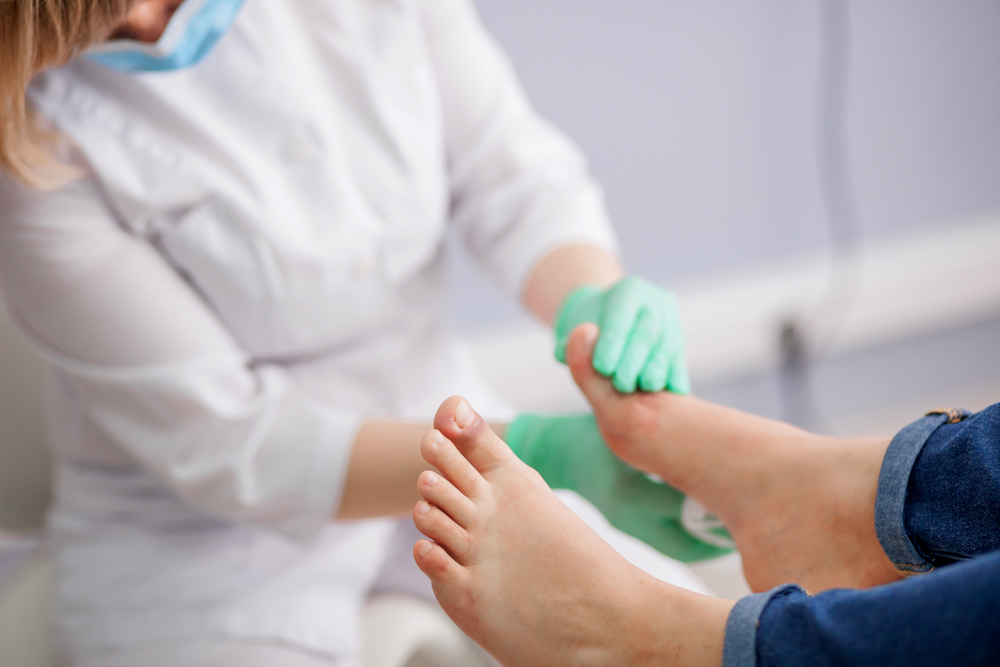
A symptom of poorly managed diabetes, diabetic foot affects a quarter of Quebec’s diabetic patients. Caused by an immune deficiency, it exposes the carrier to the possibility of serious infection when an injury occurs.
If not treated promptly, an injury to the diabetic foot can cause irreversible damage. Fortunately, there are several ways to identify wounds before they become a real problem.
What triggers the appearance of injuries on a diabetic foot?
Ulcers are caused by diabetes that is not adequately managed. In the long run, if the illness is not treated properly, it damages the nerve endings of the foot. As a result, the person with diabetes is no longer able to detect discomfort, which delays the identification of injuries.
For someone with diabetes and a debilitated body, this type of injury can turn into a nightmare. This is why it is essential to act early to avoid bacterial or fungal infections.
Signs of a minor foot injury
Complications arising from a diabetic foot injury can be unpleasant. These can range from ulceration to amputation. This is why it is essential to know how to recognize the first signs of a lesion.
The scientific community agrees that a person with diabetes should undergo a professional foot examination at least once a year. Nevertheless, it is important to conduct a daily inspection.
Several aspects must be monitored during the foot examination:
- Wounds or ulcers that take a long time to heal
- Cuts
- Blisters
- Plantar warts
- Bruises
- Unusual swelling
- Redness or changes in skin colour
If you notice an ingrown toenail or many calluses, it is advisable to contact your foot healthcare specialist or a podiatry clinic that will be able to refer you to a healthcare professional.
When should you consult a podiatrist?
A diabetic patient should always be concerned about the health of their lower limbs. Any swelling, redness or pain could be dangerous. Consequently, preventing complications often involves detecting any lesions.
For diabetic patients with peripheral neuropathy (loss of sensation), it may be difficult to assess the severity of an injury.
However, some common signs may help them understand the need to contact a foot care professional:
- Tingling or plantar stiffness
- Swelling or any change in the appearance of the foot
- Plantar dryness
- Calluses or cracks
- Open wounds or purulent blisters
In addition to providing immediate care for the foot injury, a qualified podiatrist can also offer you several complementary treatments such as custom-made foot orthotics.
First aid to be administered
When a worrisome lesion is first noticed, your first reflex should be to contact a podiatrist or a medical clinic. However, it is important to properly clean the affected area to avoid infection.
The first step is to clean the wound with a saline solution that is easy to prepare:
- Mix one cup of water with 1/2 tsp of salt.
- Boil the mixture for 1 minute.
- Let the solution cool.*
(*May be stored in the refrigerator for 24 hours.)
The affected area should then be covered with a dry dressing. However, avoid tying the bandage too tightly or applying adhesives directly to the foot.
During the days following treatment, the wound should be examined daily for infections.
Swelling, redness or any discharge are all signs that an injury is not healing properly and should be treated by a podiatrist.
It is also best to avoid putting weight on the injury.
PiedRéseau, your ally in the prevention and treatment of diabetic foot injuries
Located throughout Quebec, PiedRéseau combines the expertise of more than 40 podiatric clinics. From dermatological problems to custom-made orthotics, our specialists provide treatment for a wide range of pathologies.
If you have diabetes and you notice unusual lesions on your feet, consult a podiatrist. Your podiatrist can provide professional guidance and propose a suitable solution.
Consult a PiedRéseau podiatry clinic to prevent complications related to diabetic foot injuries.

